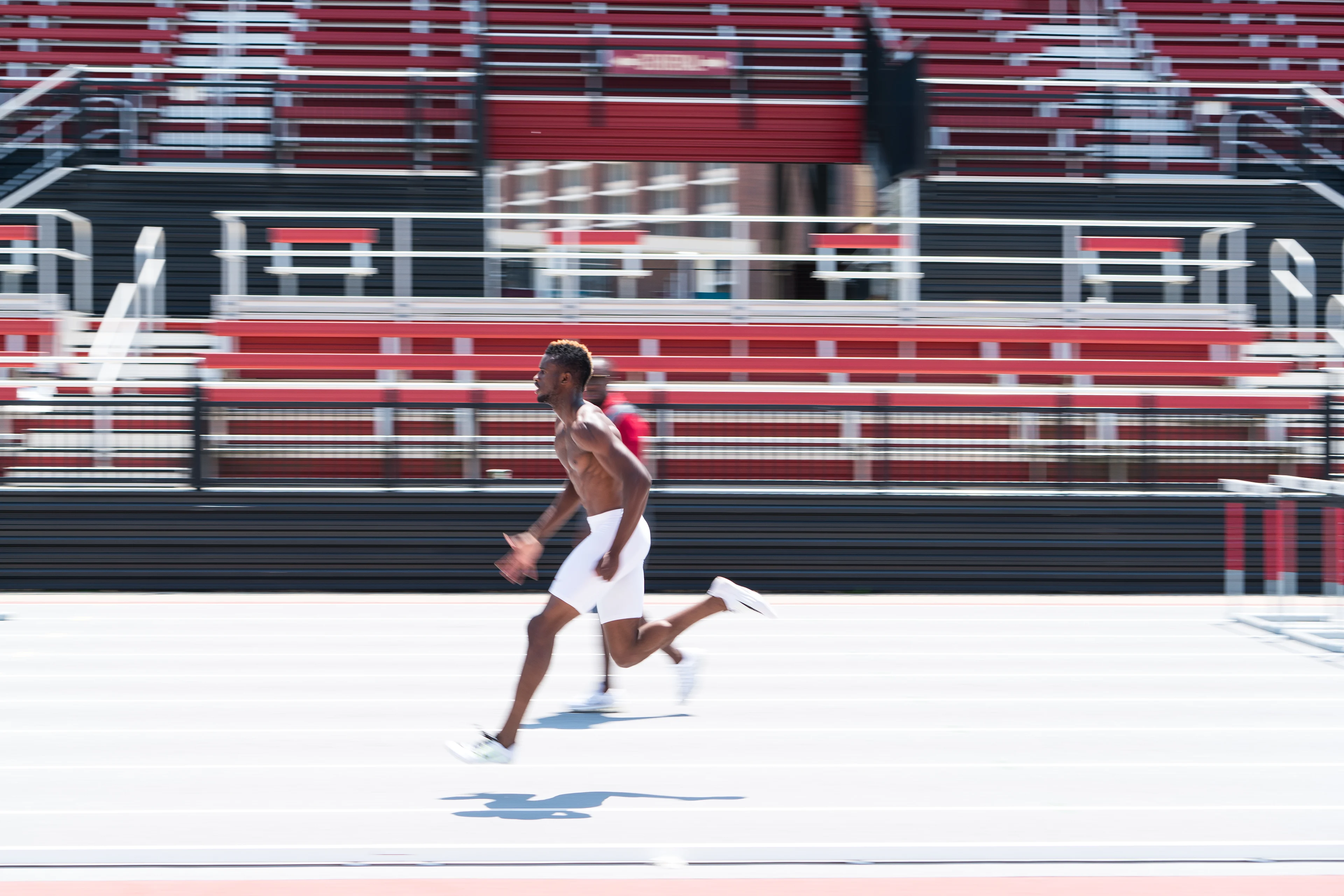Topics
- Article
Why Athletes Should Want High Heart Rate Variability

Why is it that one day an athlete has the game of their life, and the next they play like crap?
Two sprinters, Brett and Justin, are at the starting line. Both are 6 foot 2, 180 pounds, and considered the best sprinters in the northern hemisphere. In the past 5 races, the difference in their times has been around .05 seconds. Both are equally talented and both are equally fast. As they get into the starting blocks Brett looks over to Justin and confidently says, “good luck.” The gun fires off and the race is over in a matter of seconds. Brett clocks in at 9.67 and Justin finishes at 9.91, a difference of .24–an eon of time in the sprinting world. Why did Brett win by a landslide when both were equally talented? Why was there a gap of .24 seconds when the race should have been closer? Why is it that one day an athlete has the game of their life, and the next they play like crap?

As we continue to unveil the nuances of athletic performance, this post examines Heart Rate Variability, a key athletic performance indicator.
What is Heart Rate Variability?
Heart Rate Variability (HRV) is a function of the difference in timing between successive heart beats. Think of it this way–say you have a resting heart rate of 60 beats per minute. In actuality, your heart is not beating once every second, which many people think. Your heart actually has an irregular rhythm that causes the timing between each beat to change. HRV is a statistical measurement of heart rate irregularity. Originally used as a predictor of survival after acute medical emergencies, the application of HRV has rapidly expanded, and it has now become one of the most studied areas of physiological response to exercise. HRV has been shown in numerous studies to positively correlate with athletic performance and training adaptation, and to negatively correlate with risk of overtraining and injuries.
Why Do We Have Irregularity?
Our heart rate has irregularity because of our autonomic nervous system. This system has two competing branches–the sympathetic and the parasympathetic. Sympathetic: Often called the “fight or flight.” This is the activating branch. Parasympathetic: Often called “rest and digest.” This is the deactivating branch. As an athlete, your body has various “on” and “off” switches that are constantly causing these two branches to interact with each other. “On” switches correlate to your sympathetic branch, and “off” switches correlate to your parasympathetic branch. Throughout a typical day, your body is exposed to various situations that require these switches to be turned on and off. These can be in the form of going for a run, or sitting down and relaxing after an intense practice. The faster they can be switched, the more likely your body will be able to adapt quickly to its surroundings. To relate it back to sports, faster on-off switches means your body can pump more energy into an activity, resulting in quicker reactions, faster running, more endurance, etc.

High HRV means you’re getting both strong “on” and “off” outputs and your body is highly responsive to your environment. It can quickly shift its energy from “fight or flight” to “rest and digest” to easily match its surroundings. Low HRV means that either your sympathetic or parasympathetic system is inhibiting the other, meaning your ability to respond to the inhibited branch’s inputs is reduced. Keep in mind that everyone’s HRV is different. There is no magic number we all should be striving for. Everyone has their own average.
Why Should Athletes Care?
As an athlete, you’re always looking for that 1% improvement in every aspect of your game. But as elite athletes get better and the margin for improvement narrows, actually achieving a 1% improvement becomes harder. With that in mind, athletes are conditioned to revert to the “train harder” mentality in order to grab that 1%. This mentality doesn’t always work because much too often overtraining and injuries occur as a result. An easy way to think about it is that everyone has a certain allotted amount of energy their body can expel. If your body gets sick, it starts fighting off the cold in a silent manner by using some of that energy without you even knowing. Behind the scenes, your immune system is hogging up the resources your body has in storage, making it harder to divert energy in order to adapt to your surroundings. Think about it, when you are sick, your reactions are slower, you’re often out of breath, and it’s hard to focus. It’s hard for your body to turn those “switches” on and off because one branch is dominating the other. HRV, which is an indicator of that, becomes this amazing metric for measuring how ready your body is to adapt, and ultimately perform in sports. Now I’m not saying you should live and die by this number, I’m only saying that if you want to make sure your body is peaking at the right moments, having insight into HRV becomes that coveted 1% all athletes are looking for. In the case of Brett and Justin, since both sprinters were equally talented, HRV might be the metric that explains the difference between winning and losing.